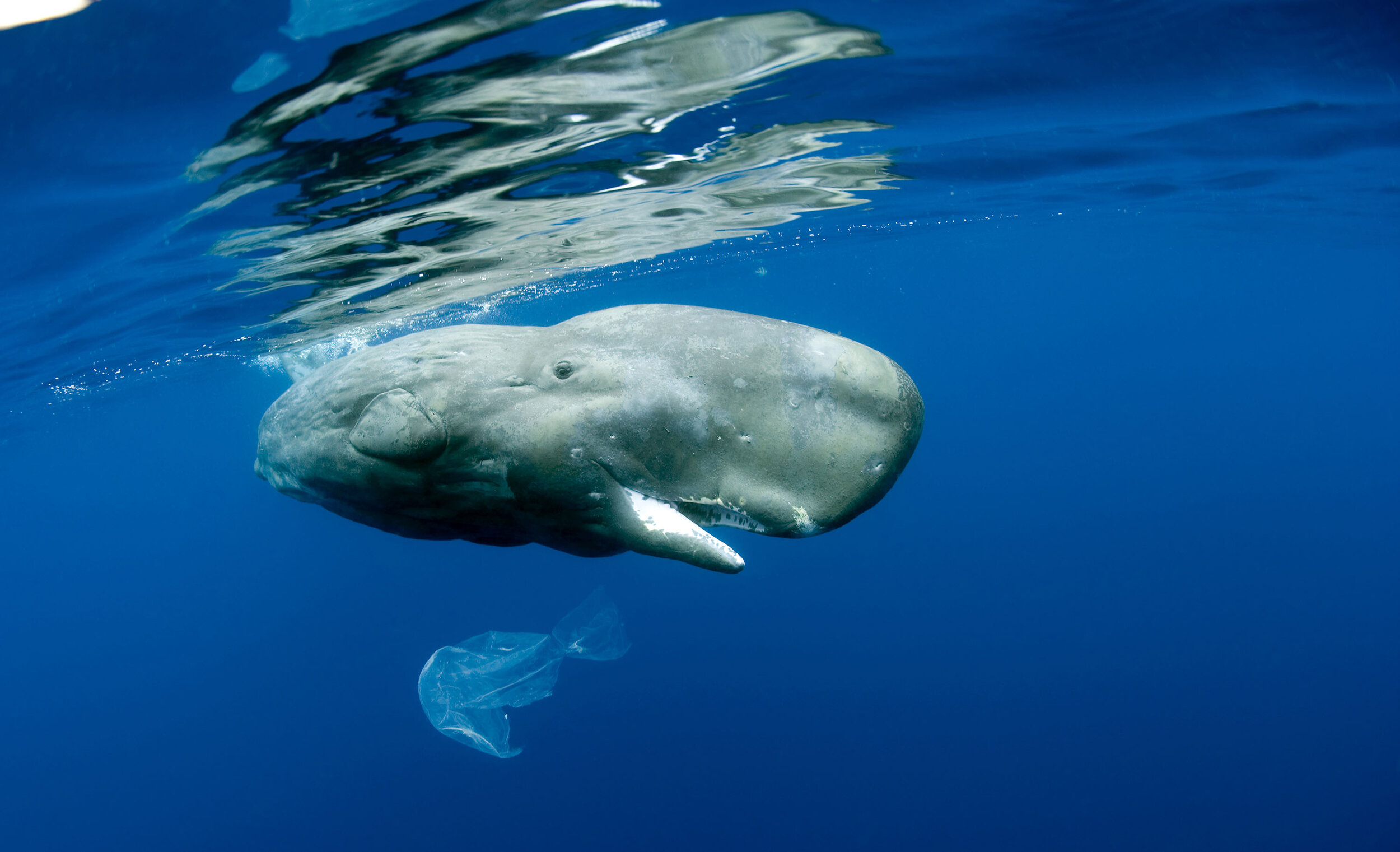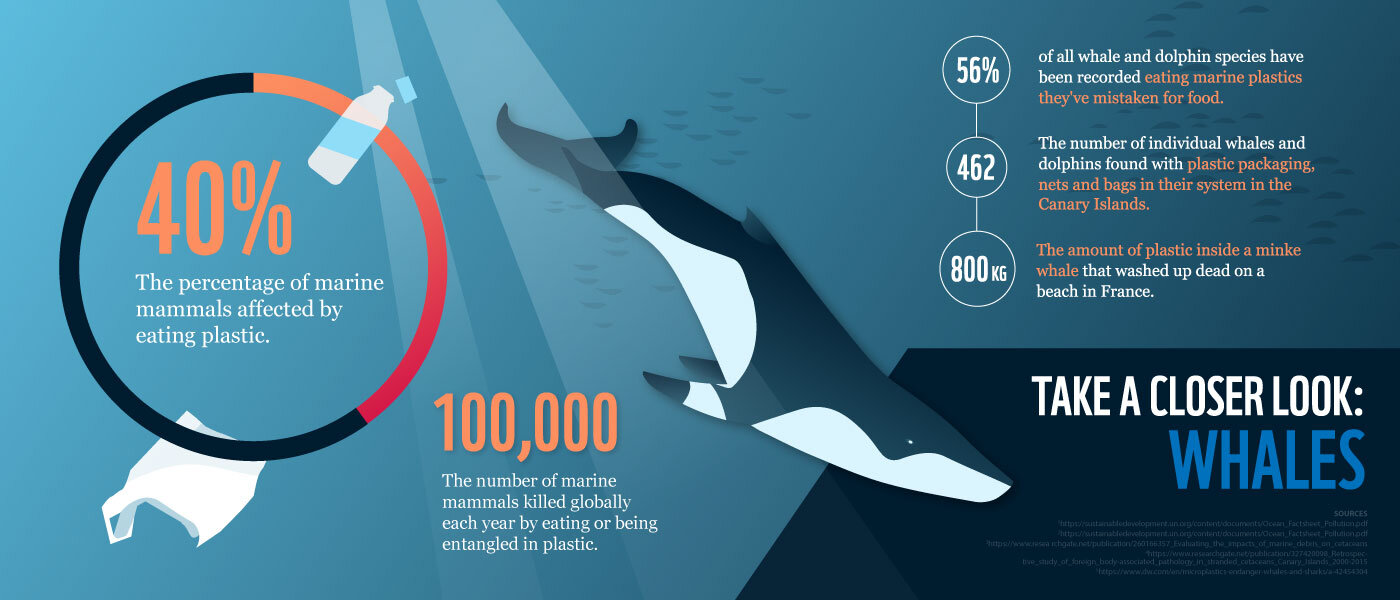
Pollution
Marine pollution is indiscriminate, threatening some of our most fragile habitats and species.
Photo © naturepl.com / Franco Banfi / WWF
Run-off from the land, the deliberate dumping of sewage, dredging, accidental oil spills, nets or discarded rubbish – all are polluting our marine environments, with dire consequences.
Eighty per cent of marine pollution is generated by land-based activities and is having a devastating effect on our oceans. As well as degrading habitat, pollution directly threatens marine animals including whales and dolphins.
Garbage – including plastics
Garbage discarded in our oceans poses several threats. Marine species often mistake plastics, for instance, as food, only to experience excruciating deaths when it blocks their breathing passages and stomachs. Discarded ‘ghost nets' and fishing gear entrap unwitting marine animals. Globally, 100,000 marine mammals die every year as a result of plastic pollution.
Toxic chemicals
Invisible toxic chemicals make their way from polluted water to plankton and on up the food chain, and are found in the skin and blubber of cetaceans.
Research by WWF in the Mediterranean Sea shows a high contamination of whales, dolphins and porpoises by phthalates, a component of plastics commonly found in packages, cables, varnish, medicines, paint and cosmetics. Phthalates are considered toxic for humans and animals, with potential harmful effects on fertility and foetus development. Today, the global production of phthalates is 3 million tonnes per year.
Oil spills
Oil spills can be catastrophic, but not all the oil that enters the sea leaks from ships. A large amount of oil can be traced back to factories within our cities, and poor containment or disposal methods.
Hydrocarbons, including crude oil, can be released intentionally by oil tankers after offloading, or unintentionally through accidental discharges and oil spills. Fuel oil can also be released into the environment from leaking vessels and shipping accidents.
Drilling lubricants used by the oil industry can contain high concentrations of hydrocarbons and heavy metals that can have toxic impact upon marine life.
How does plastic pollution affect marine life?
It’s estimated that 56 per cent of the planet’s whale, dolphin and porpoise species have consumed plastic – a plastic bag ballooned with water, for example, can look a lot like squid or other prey to the seals and marine mammals that hunt them. Many experience excruciating deaths when the plastic blocks their breathing passages and stomachs.
The other way that plastic pollution effects ocean mammals is through entanglement, and one of the worst offenders is abandoned fishing gear. Left to float in the ocean, it can ensnare unwary marine creatures. Marine mammals can’t breathe underwater, and the most common way that entanglement kills is through drowning.
WWF in action
How to stem the plastic tide?
In the Mediterranean, where microplastics have accumulated in abundance, WWF scientists are analysing traces of plastic they find in whales to understand the strain that rising pollution is putting on our oceans and marine species, and what can be done to stem the plastic tide.
Monitoring pollution in cetaceans
WWF France created the Cap Cetacés research project in 2000. The aim is to better understand how invisible toxic and plastic pollution is impacting the cetaceans in the Mediterranean region.
Pollution solutions
Every year, many tonnes of plastics end up in our ocean. WWF is advocating governments and businesses develop better waste management systems, ban single-use plastics and adopt legally binding targets to eliminate plastic waste by 2030.





